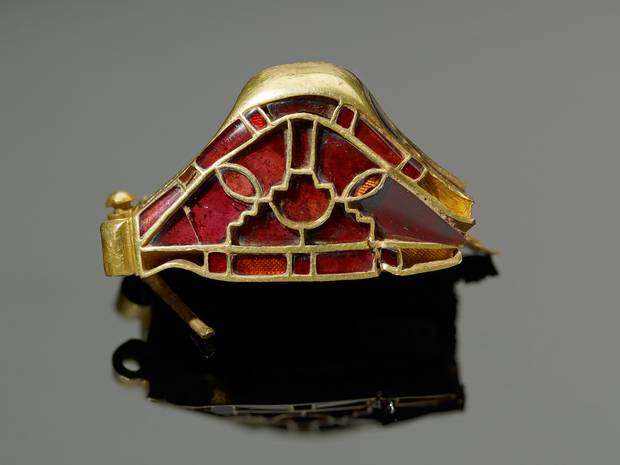
Tests on the famous Staffordshire Anglo-Saxon treasure, a vast gold and silver hoard found by a metal detectorist five years ago, have now revealed that the 7th century Anglo-Saxon goldsmiths used sophisticated techniques to make 12-18 karat gold look like 21-23 karat material.
Scientific research, carried out over the past two years on behalf of Birmingham City and Stoke-on-Trent City councils, which jointly own the hoard, has revealed that the Anglo-Saxon goldsmiths had discovered an ingenious way of, metallurgically, dressing mutton up as a lamb. It appears that they deliberately used a weak acid solution - almost certainly ferric chloride - to remove silver and other non-gold impurities from the top few microns of the surfaces of gold artefacts, thus increasing the surfaces' percentage gold content and therefore improving its appearance. This piece of Anglo-Saxon high tech deception turned the surfaces of relatively low karat, slightly greenish pale yellow gold/silver alloys into high karat, rich deep yellow, apparently high purity gold.
Archaeologists had never previously realised that Anglo-Saxon goldsmiths had developed such technology.
"We had no idea they were doing it," said Dr Eleanor Blakelock, a leading British archaeometalurgist who carried out the tests on the Staffordshire hoard gold.
"Previously, we had just done analyses of the surfaces of objects - because we didn't suspect that the Anglo-Saxon goldsmiths were deliberately removing the silver content from the surfaces of gold artefacts," she said.
It's thought that the Anglo-Saxon goldsmiths probably made their ferric chloride by heating up a mixture of water, salt and iron-rich clay (or potentially dust from crushed up old Roman tiles).
Although the goldsmiths often seem to have used the technique to create contrasts between different shades of gold, they also appear to have used it to enhance the apparent purity of gold used by the Anglo-Saxon nobility.
For the scientific tests - mainly funded by English Heritage - suggest that gold objects made for Anglo-Saxon royals, rather than mere nobility, were made of high karat material, which did not need to be subjected to the 'surface enrichment' trick.
The archaeologists have come to that conclusion by carrying out comparative tests on Anglo-Saxon gold objects, from East Anglia's Sutton Hoo ship burial, which is thought to have been associated with royalty.
Significantly, this suggests that six of the 839 gold items in the Staffordshire hoard, including two sword pommels and two unusual tiny snake sculptures, were therefore made for Anglo-Saxon royalty.
The Staffordshire Hoard, discovered near the village of Hammerwich in 2009, has, over the past two years, been the subject of one of the largest archaeological studies ever carried out. The hoard consists of almost 3,700 fragments - some 2,800 of silver and 839 of gold. However the silver items (1,500 of which came from just one or two high status helmets) are much more fragmentary than the gold ones. In weight terms therefore the hoard consists of five kilos of gold and 1.5 kilos of silver.
The 3,700 fragments probably represent between 300 and 800 original artefacts - mainly from weapons (including sets of gold and silver fittings from more than 100 swords) and at least one spectacular helmet. Work has not yet been completed on reconstructing the latter highly decorated mainly silver object. Most of the artefacts were made by Anglo-Saxon craftsmen in the first half of the 7th century AD - although a dozen heirloom pieces were probably made in the previous century, including a sword pommel, crafted in around 575 AD, probably in eastern Sweden.
The entire hoard, almost certainly worth the equivalent of tens of millions of pounds in Anglo-Saxon times, was deliberately buried, probably for safe-keeping sometime between around 650 (or perhaps as late as 670) and around 700.
It is likely that the entire treasure was hidden to keep it out of the hands of enemies or political rivals.
There are a number of late 7th century scenarios in which the Mercian elite or sections of it might have deliberately hidden their wealth.
For instance, in 674/675 AD, the kingdom of Mercia was defeated by its northern neighbour, the kingdom of Northumbria, which then demanded tribute, almost certainly in the form of gold, from the Mercian King Wulfhere, who might then have wanted to bury his or his court goldsmith's wealth to keep it out of Northumbrian hands.
Soon afterwards, Mercia was also challenged militarily by a former vassal, the Kingdom of Wessex. Indeed in 685-688AD, Mercia faced recurrent threats from that latter source.
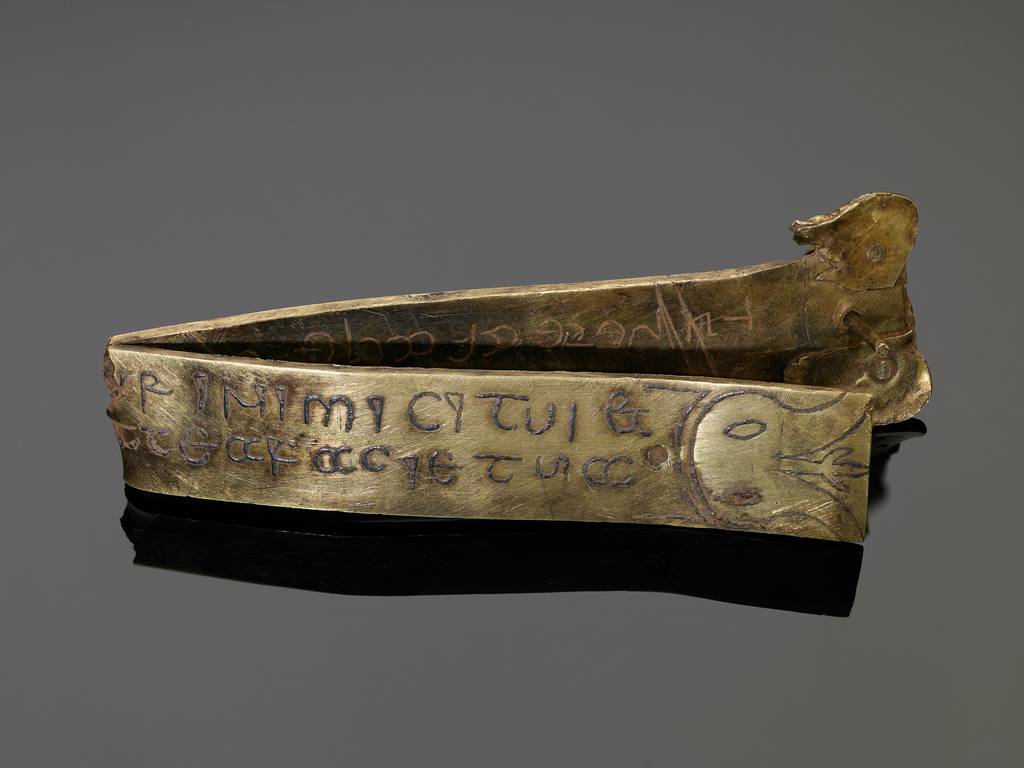
Almost symbolically, the only inscription in the hoard amply reflects the violence, warfare and chronic instability of the period. A strip of gold, possibly from a Christian cross, bears the following words from the Bible's Book of Numbers: "Rise up, oh Lord, and may thy enemies be dispersed and those who hate thee be driven from thy face".
Many of the newly cleaned, researched and conserved gold and silver treasures are going on permanent display from today onwards at a new Staffordshire Hoard gallery at Birmingham Museum and Art Gallery. Other gold and silver items from the hoard can be seen at the Potteries Museum and Art Gallery in Stoke-on-Trent.
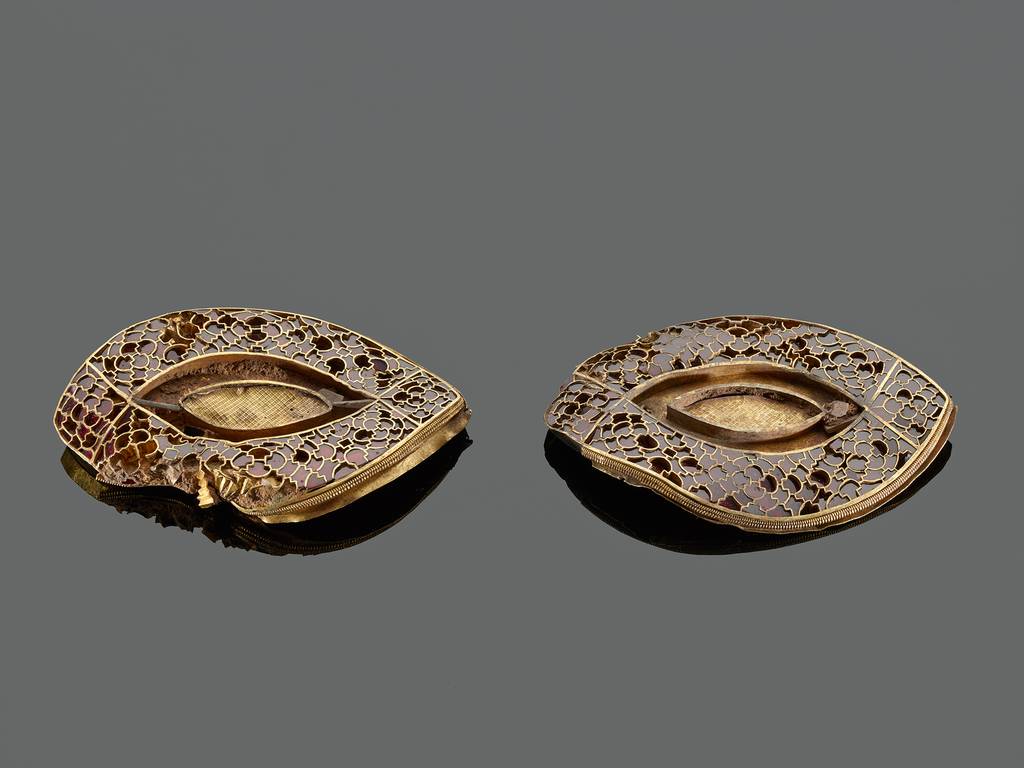
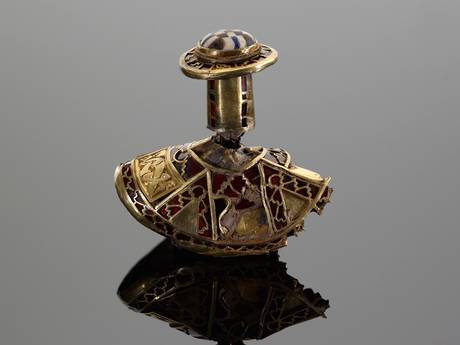
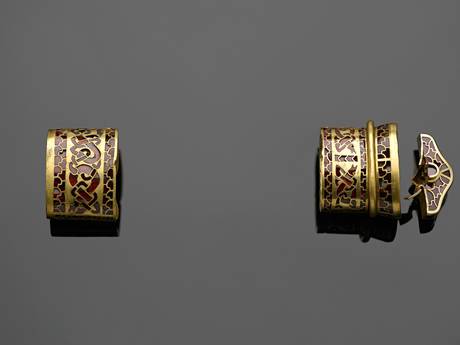



is a natural gold/silver alloy found primarily in the past in Turkey. This gold/silver alloy can also be created by manipulation. Once the nature-created alloy was used up, humans resorted to making their own.